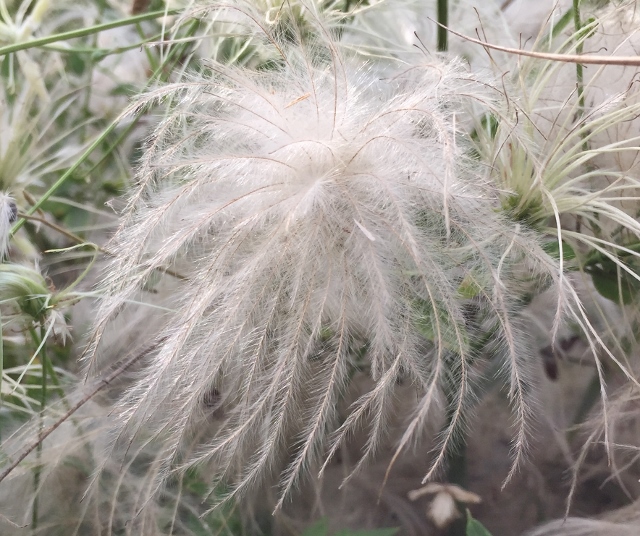


The many stages of Old Man’s Beard
By Anita Westervelt, Texas Master Naturalist.
An interesting late summer sight along city fences, fields and roadsides may seem like a fluffy mass of colorless fuzz. Something to ignore as uninteresting and messy.
Don’t disregard it. If the opportunity arises, it’s a native plant worthy of closer inspection. The scientific name is Clematis drmmondii. Locals know it as Old Man’s Beard. If driving north to Kingsville, there may be safe places to pull over where you may notice this vine covering many of the fences along the highway.
The fluffy mass starts to take shape the closer you get to the plant. It has a number of shapes. First of all, it is a vine. Like most vines here in the Valley, it doesn’t mind what it climbs over whether fence, small shrubs, through young scrub trees, or sprawled on the ground. It will even cover a cropping of invasive Guinea grass. Unfortunately, in regard to Guinea grass, it does not kill what it covers.
Other shapes to note are the many stages of flowers. Interestingly, it has male and female flowers on separate plants, which is what is known as being dioecious. The vines intertwine so intricately on long, slender, somewhat woody stems that it is hard to determine which flower is on what stem. Some experts maintain that both male and female flowers are on a single stem, making it monoecious, but the majority consider it dioecious.
During spring and summer, the flowers are somewhat insignificant and the small, tender, lobed leaflets are more prominent. Although small, up to one inch in length, the leaflets are an important food to white-tailed deer. Rio Grande turkeys occasionally will eat the leaves.
The names for this plant are as varied as the flowering stages and include Texas Virgin’s Bower, Graybeard, Love-in-the-mist, Grandad Beard, and Goat’s Beard or Barbas De Chivato.
Besides south central Texas, and by whatever name, Old Man’s Beard is found in the southwestern states and as far north as Oklahoma and south into northern Mexico. The plants here in the Valley bloom spring through fall.
Late summer is the special time of year to study this vine. This is when the female flowers begin a unique and elegant transformation as the fruits form. Three inch long silvery wisps of tendrils flow from the center of the flower dancing and sparkling on the wind in their iridescence.
These plumes will serve as the vehicle to carry seeds in the wind, once they are mature. The flowers in this stage of the plant’s life give the plant its old man and goat’s beard names. In contrast to that vision, the delicacy of the late summer female flowers could appear worthy of adorning a Victorian lady’s hat.
The older the plant, the larger its mass as it establishes and self-propagates readily from seed. The vines prefer well-drained soil and tolerate moisture as well as drought, assuring us of their annual show even in the driest of years.
Vines are an important addition to our native habitat. They can provide a cool shelter for snakes, lizards, ground-nesting birds and other critters. Above ground, they are a hive of activity, their blooms used by butterflies, dragonflies and other beneficial pollinators. Although aggressive if left untended, Old Man’s Beard is a perennial and can be managed.
